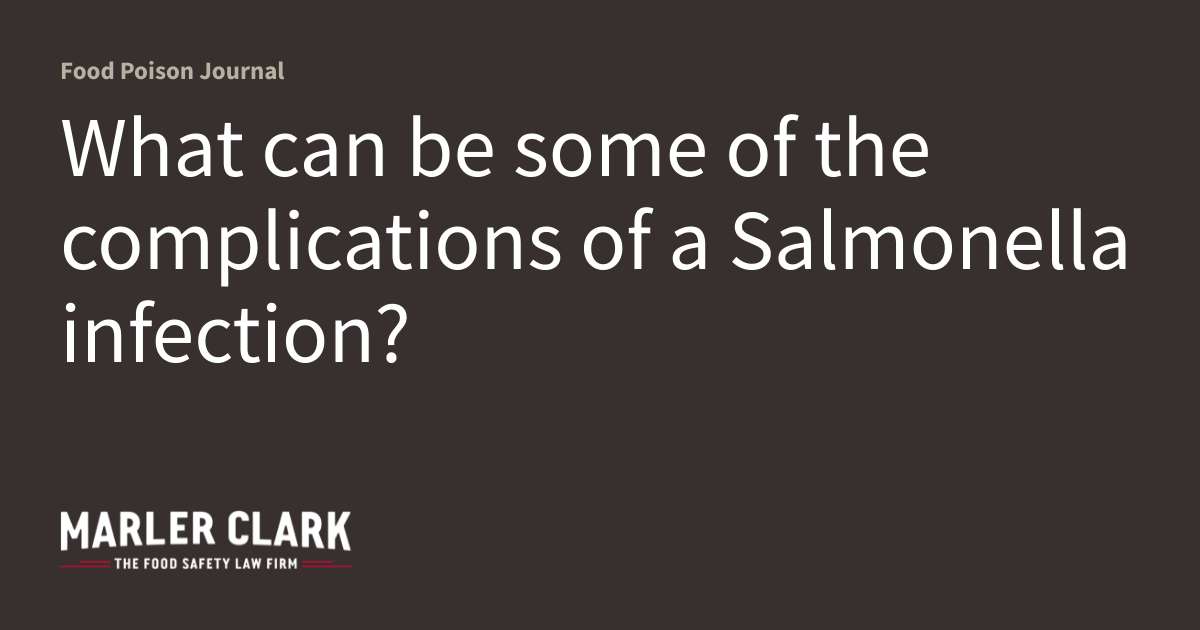Infection
What can be some of the complications of a Salmonella infection?
With 17 reported Salmonella cases linked to cantaloupe hospitalized, what is happening to them?
Reactive Arthritis
Formerly referred to as Reiter Syndrome, the term reactive arthritis refers to an inflammation of one or more joints, following an infection localized at a site distant from the affected joints. The predominant site of the infection is the gastrointestinal tract. And reactive arthritis can be post infection, meaning that the infection may not be active when diagnosed. Several bacteria, including Salmonella, can cause reactive arthritis.[1] And although the resulting joint pain and inflammation can resolve completely over time, permanent joint damage can occur.[2]
The symptoms of reactive arthritis include pain and swelling in the knees, ankles, feet, and heels. Less frequently, the upper extremities may be affected, including the wrists, elbows, and fingers. Tendonitis (inflammation of the tendons) or enthesitis (inflammation where tendons attach to the bone) can occur. Other symptoms may include prostatitis, cervicitis, urethritis (inflammation of the prostate gland, cervix, or urethra), conjunctivitis (inflammation of the membrane lining the eyelid), or uveitis (inflammation of the inner eye). Ulcers and skin rashes are less common. Symptoms can range from mild to severe and can occur anywhere from three days to six weeks after the antecedent infection and may involve one or more joints, though usually six or fewer. Although most cases recover within a few months, some continue to experience complications for years. Treatment focuses on relieving the symptoms.[3]
Irritable Bowel Syndrome
Irritable bowel syndrome (IBS) is a functional disorder of the gastrointestinal tract. The hallmark symptoms of IBS are abdominal pain and altered bowel habits, ranging from constipation to diarrhea, or alternating diarrhea and constipation. Abdominal pain is usually crampy in nature, but character and sites can vary. In some patients, the pain is relieved by defecation but, in others, defecation may worsen the pain. Additional symptoms may include bloating, straining at stools, and a sense of incomplete evacuation.
The observation that the onset of IBS symptoms can be precipitated by gastrointestinal infection dates back to the 1950s. Mechanisms are not known but include changes in the microbiome, use of antibiotics to treat the infection, and an increase in enteroendocrine cells.
Another consequence of infective gastroenteritis is the disruption of normal gut flora. Studies on postinfectious IBS have provided etiological insights into the pathogenesis of IBS. It is well documented that following infective gastroenteritis, more than 10% of affected individuals go on to develop postinfectious IBS.[4] The risk of postinfectious IBS appears greater with bacterial gastroenteritis compared to viral gastroenteritis.
[1] See “Reactive Arthritis.” Questions and Answers About. N.p., n.d. Web. 12 Nov. 2015.
[2] Id.
[3] “Reactive Arthritis.” National Institute of Arthritis and Musculoskeletal and Skin Diseases, Oct. 2016. Available at: https://www.niams.nih.gov/health-topics/reactive-arthritis.
[4] Ng, Q. X., Soh, A., Loke, W., Lim, D. Y., & Yeo, W. S. (2018). The role of inflammation in irritable bowel syndrome (IBS). Journal of inflammation research, 11, 345–349. https://doi.org/10.2147/JIR.S174982

